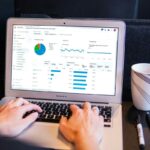Understanding Shopify Theme Performance
Too Long; Didn’t Read: Shopify theme performance directly impacts user experience and conversions. A fast, mobile-optimized site reduces bounce rates, improves SEO, and increases sales.
To enhance speed, minimize unused JavaScript and CSS, optimize images, limit third-party apps, and implement lazy loading. Advanced tactics include using lightweight themes, reducing render-blocking resources, and managing server response times. Tools like Google PageSpeed Insights and Shopify Speed Reports help monitor performance.
Balancing budget and performance is crucial—invest in high-impact optimizations first. Regular audits and performance monitoring ensure your store remains fast, efficient, and competitive in the e-commerce market.
Shopify theme performance is vital for user experience and conversions. A fast, responsive site keeps visitors engaged and drives sales. Website speed directly influences how users interact with your store, affecting retention and purchase decisions.
Mobile traffic is a significant factor. With an increasing number of users browsing on mobile devices, optimizing for mobile performance is essential. Poor mobile speed can lead to higher bounce rates and lower Google Speed Test scores, impacting your store’s visibility and success.
Consider these key aspects:
- Website Speed: Crucial for retaining visitors and boosting sales.
- User Experience: Directly linked to how efficiently your site performs.
- Mobile Optimization: Essential for maintaining strong performance metrics.
Common Shopify Speed Issues
Shopify stores often face performance challenges that hinder user experience and affect sales. Theme customizations are a frequent culprit, often leading to slower site speeds. Customizations can result in bloated code that increases load times, negatively impacting the user experience and causing higher bounce rates.
Excessive app usage is another common issue. While apps can enhance functionality, too many third-party apps slow down the site, creating lag and potential layout shifts. This can frustrate users and drive them away before they make a purchase. To address these challenges, consider exploring our Shopify Ecommerce Development and Automation Integrations page, which offers insights into optimizing user experience and integrating Shopify with various systems like ERPs and CRMs.
Large image sizes further complicate performance. Images that aren’t optimized for web can significantly increase page load time. Slow-loading visuals not only affect user retention but also harm your site’s SEO, as search engines prioritize faster sites. For more on enhancing your site’s performance through design, our page on the critical role of UI/UX design in e-commerce development provides actionable tips for optimizing images and improving user engagement.
Initial Steps for Speed Optimization
Shopify site speed is crucial for user engagement and sales. Start by cleaning up your theme. Remove unused JavaScript and CSS files. This reduces load times by minimizing server requests.
Next, manage your apps wisely. Each app can slow down your site, so keep only those essential for your store. This prevents unnecessary bloat that harms performance.
Image optimization is key. Compress images to reduce file sizes. Use formats like JPEG for photos and PNG for transparency. Set explicit image dimensions to maintain layout stability.
Lazy loading images improves speed by loading visuals only when they’re in view. This approach reduces initial load times, enhancing user experience.
For a comprehensive guide on enhancing Shopify performance, delve into strategies like UI/UX design and security best practices, which are elaborated on our Shopify category page. Additionally, explore methods for optimizing e-commerce checkout and increasing conversions to further boost your Shopify store’s efficiency.
Follow these steps to optimize your Shopify store:
- Minify Code: Reduce the size of JavaScript and CSS files to improve loading speed.
- App Management: Remove non-essential apps to decrease load time.
- Image Compression: Use tools for compressing images without losing quality.
- Set Image Dimensions: Explicitly define height and width to avoid layout shifts.
- Implement Lazy Loading: Load images as users scroll to view them.
These steps ensure a faster, more efficient Shopify store. They improve user experience and boost conversion rates.
Advanced Performance Strategies
To boost your Shopify site’s performance, try these advanced tactics:
Pick lightweight themes. They’re fast and enhance site speed. Speedy themes create a smooth experience, driving user engagement and sales.
Swap GIFs for static images when you can. GIFs look great but can drag your site down. Static images pack a similar punch and load quicker.
Cut back on third-party scripts. They can slow things down. Ditch any scripts you don’t absolutely need. Your site will thank you with snappier response times.
Give Google Tag Manager a shot. It bundles tracking codes, cutting down on server requests and load times. You’ll find it easier to manage tags while keeping your site zippy.
For a deeper dive into optimizing your Shopify store, consider exploring our Shopify Partner Development and Automation Integrations page. It offers insights into enhancing e-commerce capabilities, including international expansion and CRM integration.
These moves will level up your store’s performance and user experience. Zero in on these tweaks to crank up your site’s speed and set yourself up for long-term wins.
Technical Optimization Tips
Optimizing your Shopify theme with technical adjustments can significantly boost site speed and user experience. Focusing on these areas will enhance performance.
Eliminate render-blocking resources. This means reducing CSS and JavaScript files that delay page rendering. Prioritize loading essential files first to speed up the initial display of content.
Minimize unused JavaScript and CSS. Review your site’s code to identify and remove any scripts or styles that aren’t necessary. This reduces file sizes and improves loading efficiency.
Optimize server response times. A fast server response is crucial for seamless user experience. Choose reliable hosting and consider using a content delivery network (CDN) to distribute content closer to your users.
Address unnecessary redirects. Each redirect adds load time. Audit your site to remove or reduce these redirects, ensuring users reach their destination faster.
For a comprehensive approach, consider getting a Free Shopify & SEO ecommerce Audit from Refindable to identify specific areas for improvement, including a 42-point analysis covering site speed, UX, and SEO strategies.
Focus on these technical adjustments:
- Render-Blocking Resources: Prioritize essential files to speed up rendering.
- Unused JavaScript and CSS: Remove unnecessary code.
- Server Response Times: Use reliable hosting and CDNs.
- Unnecessary Redirects: Minimize redirects to enhance speed.
These strategies require a deeper understanding of web development but offer substantial improvements in site performance. Prioritizing these changes can lead to a more efficient and effective Shopify store.
Reducing Cumulative Layout Shift
Minimizing Cumulative Layout Shift (CLS) is vital for a stable Shopify site experience. CLS measures visual stability, crucial for Google’s Core Web Vitals.
Reserve Space for Images: Allocate space for images and third-party content to prevent unexpected shifts during loading.
Set Dimensions for Injected Content: Define explicit dimensions for containers that might receive late-arriving content, ensuring consistent layout.
Optimize Animations with CSS Transforms: Use CSS transforms instead of position changes for animations to avoid layout shifts.
CLS impacts user satisfaction by ensuring content remains stable as it loads. A low CLS score enhances user experience, reducing bounce rates and boosting engagement. Prioritizing CLS improvements can elevate your site’s performance and user trust. For more insights on optimizing e-commerce success, explore our detailed discussion on the importance of regular website audits.
Tools for Performance Monitoring
Monitoring Shopify site performance requires the right tools. These resources help identify speed issues and optimize your store effectively.
Google PageSpeed Insights: A powerful tool for analyzing site speed. It provides detailed reports on loading performance, highlighting key areas needing improvement. Use it to track your progress and ensure your site remains fast and efficient.
Shopify Speed Reports: Within Shopify, access speed reports that offer insights into your store’s performance. These reports help pinpoint specific issues related to theme customizations and app usage, guiding you toward targeted optimizations.
WebPageTest: This tool allows for in-depth analysis of your site’s loading process. It helps identify layout shifts and other performance bottlenecks. Use it to map out issues affecting Cumulative Layout Shift scores and enhance overall stability.
For those looking to elevate their Shopify store’s performance further, consider exploring our comprehensive guide on optimizing Shopify stores, which includes a detailed audit process to enhance efficiency and sales.
Balancing Budget and Performance
Balancing budget with performance improvements is crucial for a successful Shopify store. Strategic spending ensures optimal site speed and user experience without overshooting financial limits.
Consider when hiring developers might be necessary. Complex tasks like custom coding or integrating advanced features often require professional expertise. Investing in skilled developers can lead to long-term savings by avoiding costly errors and ensuring efficient optimization.
For insights into successful Shopify enhancements, explore our case study on how we partnered with Gnarly to achieve a 41% increase in revenue through strategic improvements.
Prioritize budget allocation for maximum impact. Focus on areas that directly affect user experience and conversion rates. Start with essential optimizations like mobile responsiveness and fast loading times.
Here are some cost-effective tips to enhance performance:
- Use Lightweight Themes: Opt for themes that require minimal resources, boosting speed and reducing costs.
- Limit Third-Party Apps: Evaluate app necessity. Remove non-essential apps to streamline operations and improve speed.
- Optimize Images: Use free tools to compress and resize images, maintaining quality while enhancing load times.
- Consider DIY Improvements: Simple changes like reducing image sizes or cleaning up code can be done in-house, saving on development costs.
Making informed decisions about budget allocation helps maintain a balance between performance and expenses. Prioritizing impactful improvements ensures a fast, user-friendly store without financial strain.
Conclusion and Key Takeaways
Improving your Shopify store’s speed enhances user experience and boosts conversions. Check and adjust your site regularly to maintain top performance. Balance features and speed for functionality and quick loading.
Use these strategies to create a smoother, more efficient online experience. A thorough Shopify audit reveals ways to improve your store. This approach follows best practices and sets up your store for long-term growth.
Keep your store updated to stay competitive. Focus on user experience and performance to meet customer expectations. Apply these tips to improve your store and stay ahead in the market.





